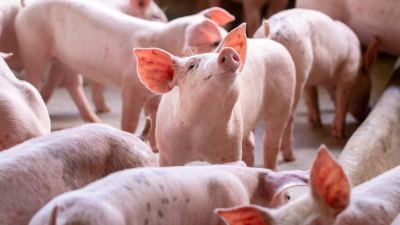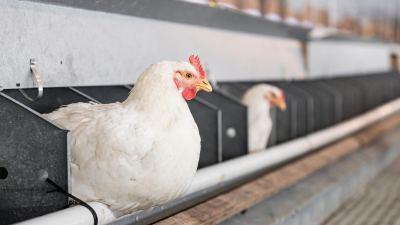Minerals: The Backbone of Fish Nutrition

Fish, just like terrestrial animals, have specific requirements for individual minerals that must be supplied through the diet. Minerals are essential nutrients that have a plethora of biological functions within different species of cultured fish, governing their development, growth, and physiological status. For example, certain minerals quite literally form the backbone of skeletal development as fish progress through their various life-stages during the farming cycle, and these minerals also exert a profound influence on the activity of endogenous enzymes, the maintenance of ionic balance and the regulation of the endocrine system. All of these functions are critical in supporting the growth of healthy, robust fish before they reach the retailer and final consumer.
Although large advancements have been made over the past decade regarding our understanding of individual mineral requirements in fish, significant gaps in this knowledge remain and must be addressed to bridge the knowledge gap between fish and their terrestrial animal counterparts. This is further complicated by the often-underestimated fact that the field of fish nutrition is vastly different from that of terrestrial animal nutrition, because the former is comprised of hundreds of species, each with distinct farming conditions, temperature optima and gastrointestinal morphologies, compared to single species within the latter. Moreover, marine fish species are also unique in that they can also absorb minerals from their environment, through drinking water to maintain osmotic balance.
Cross-species correlations: in vitro
Despite both the existence of the knowledge gap and the physiological differences between fish and terrestrial animals, startling similarities are beginning to emerge in terms of the benefit of chelated trace minerals (CTM) in vitro and the biological responses of both animal groups to this mineral source in vivo. Recent in vitro research conducted at the Alltech Coppens Aqua Centre in the Netherlands demonstrated a 20% increase in the survival of astaxanthin within high-energy trout feeds that contained chelated minerals, compared to the same diets containing inorganic trace minerals, over the entire shelf life of the feeds tested (Figure 1). Strikingly, on the terrestrial animal side, Concarr et al. (2021) demonstrated that feed premixes for poultry that contained chelated trace minerals exhibited increased retention rates of both vitamin A and vitamin D3 (Figure 1). Such studies demonstrate the emergence of parallels in the in vitro stability of both antioxidants and vitamins in feeds for both trout and poultry, which may be directly attributed to the mineral source included in the diets of aquatic and terrestrial animals.
Figure 1. Left: Comparison of astaxanthin survival during shelf life of trout feed containing either an inorganic or chelated mineral premix. Right: Retinol acetate loss in poultry feed premix containing either chelated (CTM) or inorganic trace minerals (ITM) (adapted from Concarr et al., 2021).
Cross-species correlations: in vivo
Similar marked parallels have recently been noted both between different fish species and between fish and terrestrial animals in terms of their biological responses to different sources of the same mineral in vivo. Selenium, for example, is a pivotal mineral whose principal role is the protection of lipid membranes against auto-oxidation, as it is a key constituent of the enzyme glutathione peroxidase.
Nguyen et al. (2019) illustrated superior levels of selenium deposition in Nile tilapia fillets when fish were fed a diet containing Sel-Plex®, a yeast-based selenium source, compared to those fed a diet containing an inorganic selenium source (sodium selenite). A more recent study, conducted with the same species by Furuya et al. (2023), demonstrated the same trend of higher selenium deposition in the whole body of tilapia fed Sel-Plex compared to sodium selenite. The study even showed that the same level of selenium deposition could be attained when Sel-Plex was supplemented in the diet at half of the supplementation level of sodium selenite.
The results of these two studies bear a marked resemblance to those of further recent research published in Atlantic salmon (Kokkali et al., 2023), a fish species with an entirely different physiology, where the pattern of selenium deposition in the whole body of salmon was significantly influenced by the source of dietary selenium. Such observations in fish become even more noteworthy when we consider historical research conducted in poultry and dairy cows (Paton et al., 2002; Pan et al., 2007; Petrera et al., 2008) which showed strikingly similar patterns of elevated selenium deposition in both poultry eggs and milk from dairy cows when Sel-Plex was included in the diet compared to sodium selenite. Such findings serve as a stark reminder of the knowledge gaps that exist in the mineral nutrition of fish and terrestrial animals, while illustrating that the effects of dietary mineral source may transcend the species barrier (Figure 2).
Figure 2. Relationship between dietary selenium level and source with selenium deposition in different fish and terrestrial animal species, showing marked similarities in the pattern of deposition.
Mineral retention and bone density
The parallels between different fish species become even more interesting when the differences in bone density between Nile tilapia and Atlantic salmon are accounted for, given the crucial role that minerals play in the skeletal development of fish. The skeleton of the Nile tilapia is comprised of acellular bones which are far more compact compared to the cellular bone structure of the Atlantic salmon skeleton (Cohen et al., 2012). Therefore, aside from their differences in gastrointestinal morphology, these two species also exhibit differences in their skeletal structure – yet the available evidence suggests that the effect of chelated minerals on mineral deposition remains the same.
The work of Kokkali et al. (2023) in Atlantic salmon further showed that the higher retention of total minerals in fish fed chelated trace minerals also coincided with a higher amount of available dietary phosphorus compared to fish fed diets containing inorganic trace minerals, with resulting numerical increases in overall bone strength. Such results mirror those of past research (Kousoulaki et al., 2016, Figure 3) in which a 33% reduction in fillet gaping of Atlantic salmon was observed when fish were fed low-fish-meal diets supplemented with chelated minerals.
Taken together, these findings represent clear trends and further examples for today’s fish nutritionist of the importance of choosing the correct mineral source.
Figure 3. Data from Kousoulaki et al. (2016) showing mean (± SD) fillet gaping occurrence in Atlantic salmon fed diets with medium (MFM) or low (LFM) levels of fish meal and microalgae alongside supplementation of either inorganic (ITM) or chelated (CTM) trace minerals. Note the 33% reduction in fillet gaping in fish fed LFM + CTM.
Back to basics: Retention and excretion
Going back to the basics of mineral nutrition of farmed fish, the most important elements for both the nutritionist and the farmer are that the requirements of the animal are met, and that the excretion rate of the minerals fed is minimized. There is a scarcity of data within the fish nutrition literature on mineral excretion rates of different fish species, and this will undoubtedly be an important research area in the future, particularly from the point of view of preserving the health of both the fish and the farming environment. The use of chelated minerals can aid in this area due to their higher bioavailability when compared to inorganic mineral sources.
The work of Furuya et al. (2023) and Kokkali et al. (2023) suggests that reduced levels of yeast-based selenium and chelated minerals can be supplemented in the diets of both Nile tilapia and Atlantic salmon when compared to inorganic mineral sources, owing to the higher bioavailability and enhanced retention rate of the former. Subsequently, the excretion rate of minerals to the environment may be vastly decreased when the dietary mineral source is altered.
For example, in the Furuya study, the excretion rate of dietary selenium was decreased by 40%, copper by 20% and total minerals by 20% through the inclusion of yeast-derived selenium and chelated minerals at the same level as inorganic minerals. When the dietary supplementation level of yeast-derived selenium and chelated minerals was reduced to half of the level of inorganic minerals, the excretion rate of the total dietary minerals to the environment was decreased by 31%, while the same amount of dietary minerals was retained in the whole body of the fish (Figure 4). This is a powerful demonstration of how the animal’s requirements of these essential nutrients can be met while simultaneously preserving water quality and safeguarding the farming environment.
Figure 4. Data from Furuya et al. (2023, in review) showing mean (± SD) dietary selenium, copper and total dietary minerals retained and excreted from Nile tilapia fed diets supplemented with either inorganic trace minerals (ITM) or chelated trace minerals (CTM). For Se, fish were fed either yeast-derived Se or sodium selenite.
Conclusion
The chelation of minerals may enhance their bioavailability within the diet of farmed fish species, with the results of in vitro experiments translating to tangible in vivo biological responses that traverse the species barrier between fish and terrestrial animal nutrition. The emergence of consistent, cross-species patterns of response underscores the importance of including the correct mineral form in the diets of farmed fish, in terms of protecting the health of the animal, the final consumer and the environment.
About the author:
From a young age, Dr. Philip Lyons had a passion for all things aquatic. This led to him studying for his undergraduate degree in applied freshwater and marine biology at Galway-Mayo Institute of Technology in Ireland before obtaining master’s and doctoral degrees in fish nutrition from the University of Stirling Institute of Aquaculture in Scotland. His doctoral dissertation focused on the molecular profiling of the gut microbiome of farmed salmonids, and he has published widely on this topic in peer-reviewed scientific journals.
After completing his studies in 2016, Dr. Lyons immediately joined the Alltech Coppens R&D team as a research scientist. His principal responsibilities involved the organization and implementation of the company’s nutritional R&D programs, in which he focused on the advancement of innovative applied aquafeed solutions that improve fish health and performance. He is also passionate about education and supervises a number of undergraduate and postgraduate aquaculture students as part of industry-led academic research partnerships.
In his current position as global manager of aquaculture research, Dr. Lyons is now responsible for the aquaculture research efforts of Alltech worldwide.
.jpg)















